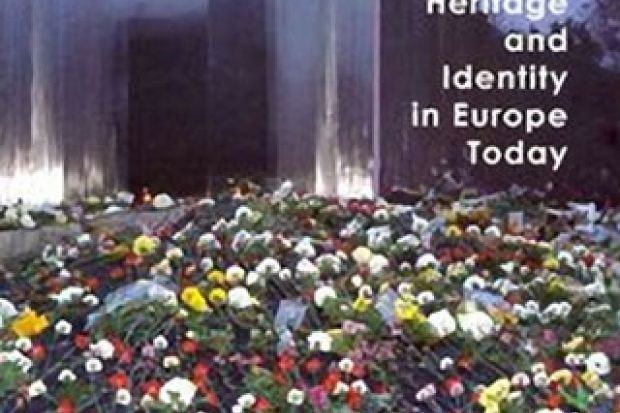With the end of the Cold War it became an academic and journalistic preoccupation to disentangle the layers of European history and to analyse the creation and destruction of national heritage throughout the 20th century. After the engagement, both with short-term history in the making and with long-term histories, reassessment shows that the many facets of memory that experienced a boom in recent decades require close inspection, too.
Coming to terms with the topic is made more difficult by the fact that some “pasts loom especially large in both official and popular memory within Europe”. In Memorylands: Heritage and Identity in Europe Today, Sharon Macdonald winds a path through the numerous academic engagements and the products of collective memory with which Europe seems to be obsessed. The past is preserved with the help of authentic heritage sites, countless memorials, carefully designed museums, commemorative plaques and imaginative art installations. Macdonald argues that nevertheless throughout the Continent there are at work distinct patterns of (re)configuring the past in the present.
The possibilities offered span from artisan Belgian chocolates to Turkish/non-Turkish German doner kebabs. Food that appears to represent a particular regional heritage transforms into a marketable good
The chapter “Feeling the past: Embodiment, place and nostalgia” deals with the sentiments attached to memory. Nostalgia, for example, became palpable in the Europe of the 1990s and the early 2000s. While in England television channels indulged their viewers with roll calls of almost-forgotten goods from their childhood and favourite films, East Germany, with the help of Ostalgie – a nostalgia for aspects of life under socialist rule – remembered treasured aspects of its pre-1989 past until it turned into a booming film and commodities industry. Post-socialist nostalgia in Eastern European countries followed suit. Macdonald highlights examples of so-called ironic nostalgia: in Hungary, objects of Cold War-era kitsch demonstrate distance from the past, while the marketing and consumption of “Soviet” sausages in Lithuania could be interpreted as an attempt to reclaim citizenship for a marginalised group of the population – unless one acknowledges that consumers simply felt that “the sausage tasted good”.
Equally interesting is the commodification of the past as history turns into business. The European accumulation of theme parks might be the cause of “real diversity [being] swept away in a barrage of predictable forms of superficial difference” among regions and countries. The examples given here are evocative, and sooner or later the question of authentic objects and experiences invites personal associations, too. The possibilities Macdonald offers span from artisan Belgian chocolates to Turkish/non-Turkish German doner kebabs. Food that appears to represent a particular regional heritage thereby transforms into a marketable good. Travel-guide recommendations as to what food and drink the visitor ought to seek out for a full experience of a city, a region or a country speak volumes.
The “musealisation” of everyday life – a benchmark is the Skye Museum of Island Life – has, according to Macdonald, flourished “in parts of Europe that are relatively marginal within late capitalism, though which were often once more central”. Together with “cosmopolitan memory” – concerned with Holocaust commemoration and national identity – this shows the productiveness of a European approach: trends, patterns and discourses become truly fascinating when they are explored within a wider context, not a more or less defined national one.
Forgetting is, of course, not an option. One of the intriguing and lingering questions this study raises throughout its nine chapters on representations of memory and the countless discourses attached to the process is whether memory “outdoes” history and how productive the increasingly commercial trend to memorialise really is. Finally, the title of the book – Memorylands – is all the more poignant when Europe (or at least parts of Europe) now seems keener to establish differences than communality: what does unite Europe, for better or worse, is the way it deals with its past(s).
Memorylands: Heritage and Identity in Europe Today
By Sharon Macdonald
Routledge, 320pp, £80.00 and £24.99
ISBN 9780415453332 and 53349
Published 2 April 2013
Register to continue
Why register?
- Registration is free and only takes a moment
- Once registered, you can read 3 articles a month
- Sign up for our newsletter
Subscribe
Or subscribe for unlimited access to:
- Unlimited access to news, views, insights & reviews
- Digital editions
- Digital access to THE’s university and college rankings analysis
Already registered or a current subscriber? Login




